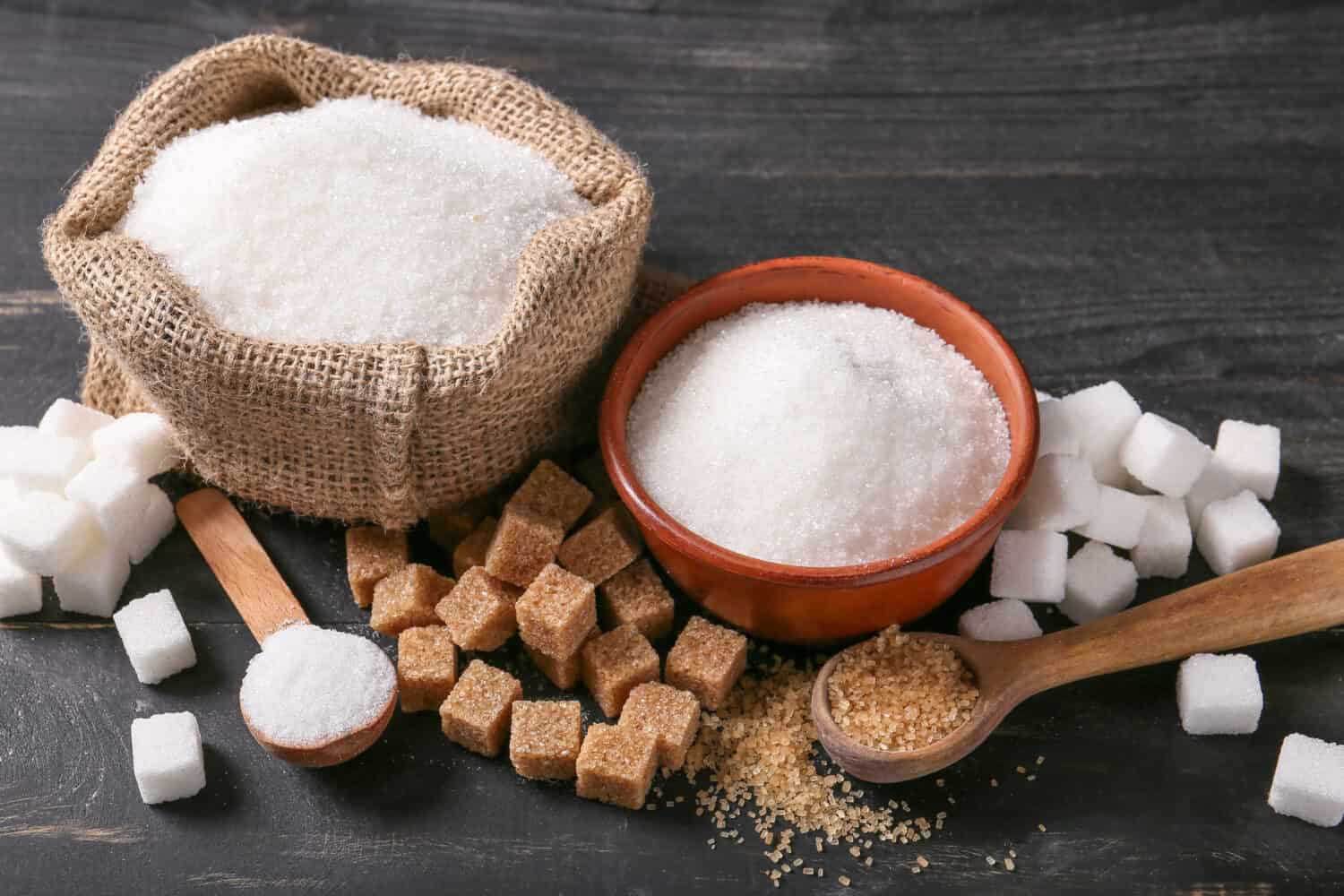Sugar has been and is still a common ingredient in kitchens for years. Individuals use it in various foods and drinks to sweeten or add flavor. Ever wondered why products like soda are so sweet? Of course, they contain sugar but not the regular type. They have what is called High Fructose Corn Syrup or HFCS. It functions like regular sugar but is different from it to a certain extent.
You may not be familiar with it, but chances are, you've consumed it in one way or another, especially if you love things like sodas. A primary difference between the two is that High Fructose Corn Syrup is a colorless or light-yellow liquid with a somewhat thick consistency. Sugar, on the other hand, is a white or brown granulated dry solid. We look at these two products' history, production, health and safety, flavor, and more.
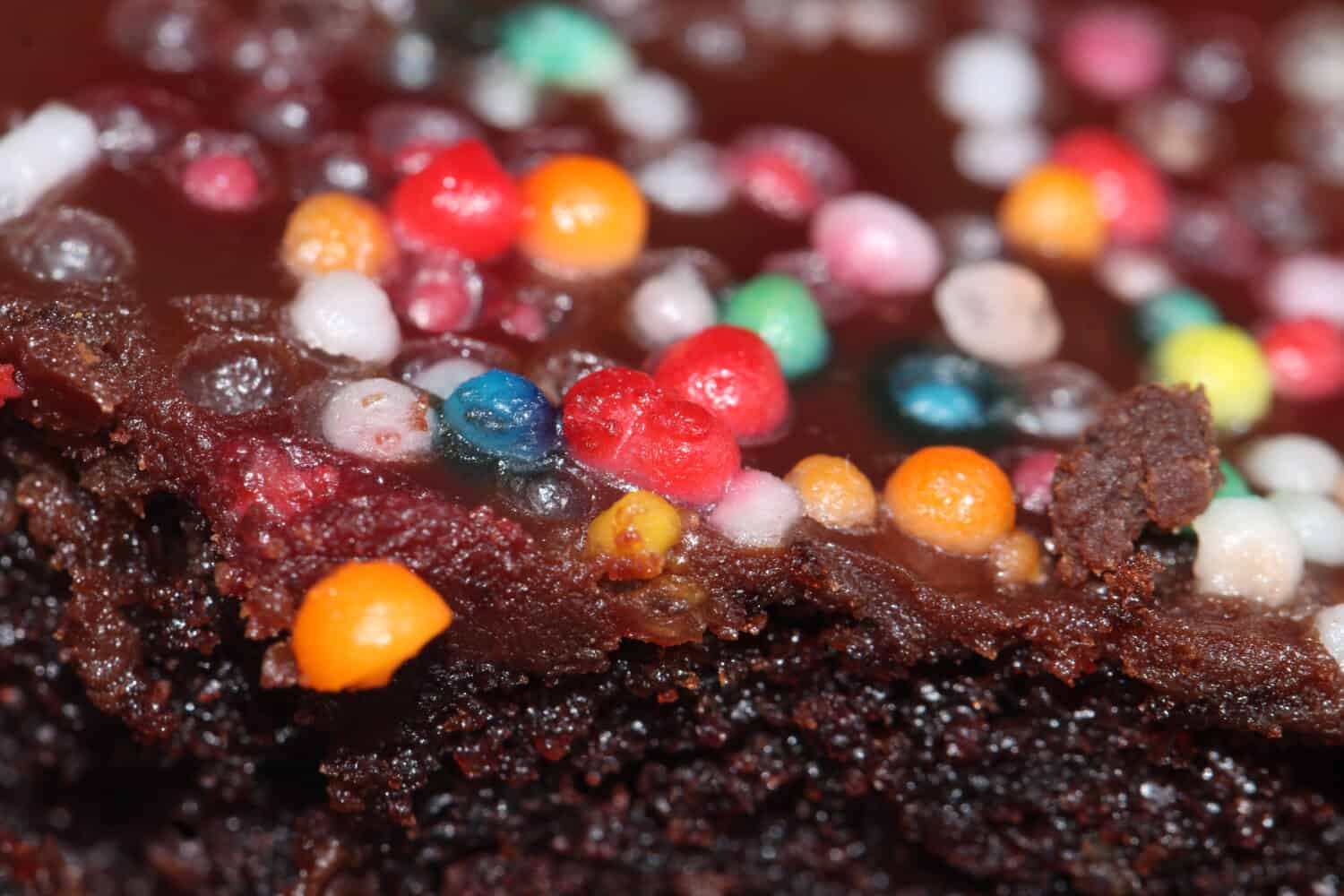
©naor/Shutterstock.com
What Are the Differences Between High Fructose Corn Syrup and Sugar?
Both elements act as sweeteners hence their similarity; however, their various aspects differ. High Fructose Corn Syrup, or HFCS, works for soft drinks, cereals, baked goods, and other processed foods. Sugar is suitable for baked items and natural grains and is a table sweetener. HFCS is a liquid with different consistencies and is clear or light yellow, while sugar is brown or white with fine particles.
The sweeteners have similar caloric values but different glycemic indexes, i.e., 87 for HFCS and 60 for sugar. Both contain fructose and glucose, but High Fructose Corn Syrup has a higher percentage of fructose (55%) and glucose (42%), while table sugar has 50% of each. The syrup has more water per gram than sugar hence its liquid state, but note that sugar still has a small percentage of it.
HFCS is cheaper than sugar and enhances flavors better too. Additionally, manufacturers prefer it to sugar in drinks and acidic foods since it's consistent and much more stable.
High Fructose Corn Syrup
HFCS, also known as isoglucose, high-fructose maize syrup, or glucose-fructose syrup, is a sweetener artificially created from corn starch. It is primarily light yellow, but some brands have no color. It's a popular sweetener, especially in the United States, for soft drinks, processed and baked goods, cereals, and canned goods like soups and some fruits. It has fructose and glucose of 55 and 42 percent, respectively.
History of HFCS
High Fructose Corn Syrup was introduced in 1957 in the United States but was never marketable. Years later, in the 1970s, the price of imported regular sugar would rise due to sugar tariffs and quotas, and food manufacturers had to find a cheaper sweetener to produce locally. At that time, Dr. Takasaki of the Agency of Industrial Science and Technology in Japan had begun the industrialization process of manufacturing HFCS. Also, corn prices were significantly low due to government subsidies, so in 1975, High Fructose Corn Syrup became marketable, and manufacturers began to use it in various foods and drinks.
HFCS Production Process
High Fructose Corn Syrup comes from genetically modified corn or maize. The corn goes through the milling process to produce cornstarch, which creates syrup with further processing. Initially, the syrup is mostly glucose with very mild sweetness. Why so, considering how sweet the syrup is on food? It comes from converting some of the glucose to fructose using enzymes. The higher fructose percentage enhances the taste hence the final sweet liquid you know.
Different kinds of HFCS are available with varying fructose amounts. HFCS 55, which is the most common type of HFCS, has 55% fructose and 42% glucose, similar to sugar. The most concentrated form, HFCS 90, has 90% fructose and 10% glucose, so it's very sweet.
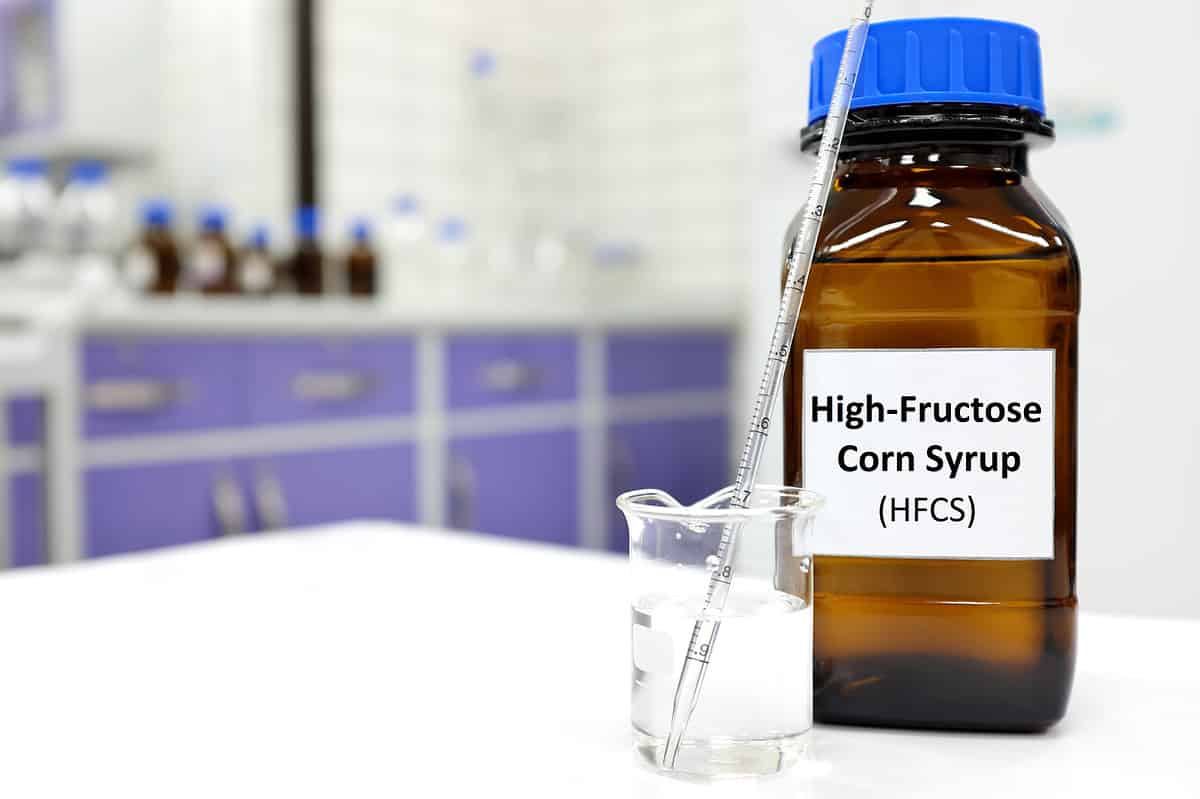
©sulit.photos/Shutterstock.com
Sugar
Sugar or sucrose is white, crystal-like, and odorless with a sweetened taste. It's a naturally occurring disaccharide with equally linked fructose and glucose molecules, each 55%.
History of Sugar
The use of sugarcane to produce sugar began in India in 500 BC. The inhabitants developed sugar crystals which they turned into syrup. They used a process similar to the present sugar syrup-making process of heating sugar into syrup and cooling it to create sugar crystals. It was a way to preserve the sugarcane and make it last longer by turning it into sugar granules which became a traditional commodity.
The Indians traded often and introduced the crystallization process to others during their travels. Some Buddhist monks took the knowledge to China, which implemented the idea, and began planting sugarcane in the 7th century A.D. Sugar spread to other parts of the world, but mainly in the tropics and sub-tropics. Sugarcane growth didn't materialize in Europe because of the climate. They centered on sugar beet, which is easier to grow, and modern sugar production still comes from that.
Sugar Production Process
Sugar juice is extracted from sugarcane stalks through diffusion or milling. Lime is put into the solution and heated to kill enzymes, forming a thin syrup. The syrup goes through vacuum chambers to evaporate and condense the sugar. At this point, the workers seed the concentrated syrup with crystals to start the crystallization process. This is what is called brown sugar.
The crystals are put in water to refine the sugar and filtered to remove impurities. Chemicals are added to remove the brown color, and the syrup is then boiled, cooled, and seeded with crystals. A liquid is usually leftover and retrieved via centrifuge resulting in white table sugar.
Are High Fructose Corn Syrup and Sugar Nutritionally Similar?
HFCS and sugar don't have huge differences. Both have fructose and glucose and what varies is their bonding. HFCS has free molecules of fructose and glucose; hence their percentages vary. As for sugar, the glucose and fructose molecules link, forming a disaccharide. That's why the ratio of glucose to fructose is at 55%. Absorption happens similarly when both products enter the body into the small intestines. Body enzymes break down sugar into fructose and glucose, like HFCS. However, sugar has more carbohydrates than HFCS, while the latter has more water.
High Fructose Corn Syrup vs. Sugar: Which is Better for Your Health?
These sugar-based sweeteners are not healthy. Despite being absorbed similarly and having almost the same nutrients, these products can be dangerous if used excessively. HFCS is in the spotlight often for its high fructose levels; however, that in sugar isn't any better if the consumption is high. The liver breaks down fructose in small portions, but when the intake is too much, it turns most of it into fat.
Over time, its causes a fatty liver contributing to its poor performance. You may suffer from liver damage, liver scarring, or nonalcoholic steatohepatitis. Also, high fructose levels cause insulin resistance, obesity, type 2 diabetes, metabolic syndrome, etc. Arteriosclerosis can occur due to elevated triglycerides in the blood. Pancreatic inflammation and excessive uric production, which causes gout, are effects of high fructose.
When you take the exact amounts of sugar and high fructose corn syrup, insulin, and leptin the body responds the same. The effects on your body weight are similar, so all health effects are generally the same.
Are There Any Natural Alternatives to HFCS or Sugar?
Many people are looking for natural alternatives to high fructose corn syrup and sugar, seeking healthier substitutes that still provide the same sweetness. Fortunately, there are plenty of natural alternatives to choose from. Honey, maple syrup, date paste, coconut sugar, agave nectar, molasses, and stevia are just some of the natural sweeteners available as healthier substitutes for high fructose corn syrup and sugar.
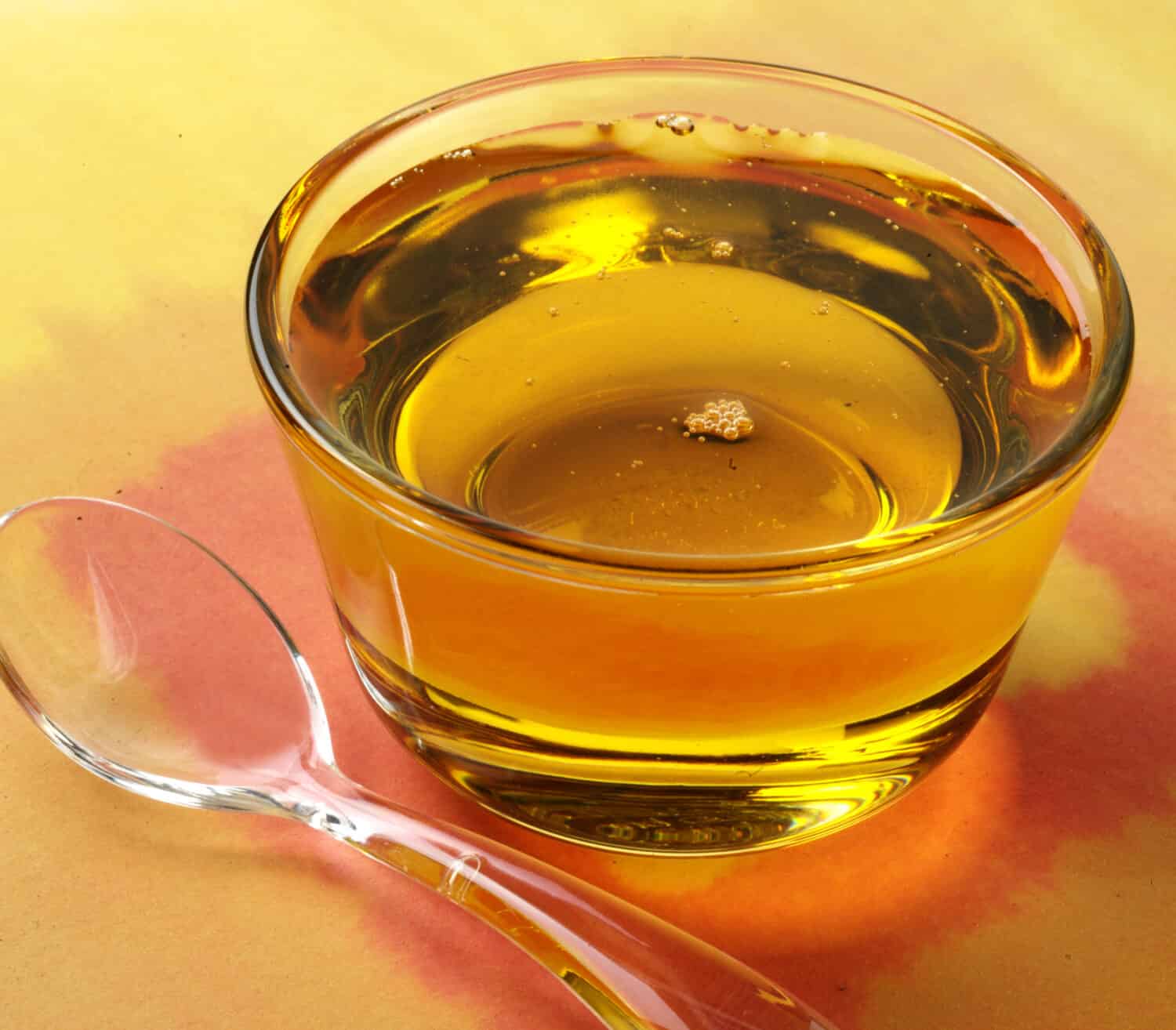
©CKP1001/Shutterstock.com
Agave Nectar
Another natural sweetener that you can use as a substitute for HFCS and sugar is agave nectar. It comes from the agave plant and has a lower glycemic index than sugar, which means it won't cause your blood sugar levels to spike as white table sugar does. While agave is still a high-calorie food, it's less likely to contribute to weight gain than regular refined sugars because of its lower GI rating and higher fiber content (though these benefits can vary depending on how much you consume).
There are two types of agave: light amber and dark amber. Light amber has more fructose than dark; so if you're trying to cut down on added sugars in general or follow a low-GI diet, choose the former variety over its darker counterpart – it will be sweeter but won't offer any additional calories or carbs beyond what's naturally found in fruit juice.
Agave has a mild flavor that works well in both sweet and savory dishes. It's often used as a substitute for honey or maple syrup because it has a similar consistency and viscosity without the same overpowering sweetness.
Maple Syrup
Maple syrup is a delicious, natural alternative to HFCS and sugar. It's made from the sap of maple trees, which means it has all kinds of vitamins, minerals, and antioxidants. And because it comes from a plant rather than an animal (like honey), it's vegan-friendly too!
Molasses
Molasses is a by-product of sugar cane processing, and it's often used in baking and to make rum. It contains more nutrients than refined white sugar: iron, manganese, vitamins B1 (thiamine), B2 (riboflavin), B6, and B12. Molasses also has calcium, copper, magnesium, and zinc which are essential for healthy bones and muscles.
Molasses has been shown to lower blood pressure which may help reduce the risk of diabetes or heart disease. It contains a significant amount of antioxidants which can help protect against free radical damage to the body.
Stevia
Stevia is also an artificial sweetener that can be used to replace sugar in recipes. Stevia is a plant-based sweetener that is calorie-free and low-carbohydrate containing less than 1 gram of net carb per serving. It's commonly used in tea and coffee, but you may be surprised to learn that it's not just for those who want to avoid sugar!
Honey
Honey is another sweetener that can be used as an alternative to sugar or HFCS, but it has its own drawbacks. Honey is a natural sweetener made by bees, and while it's been shown to have health benefits like antioxidant properties and antibacterial properties, it's not calorie-free. Some people have allergies or sensitivities to honey as well, so if you're looking for an alternative sweetener that doesn't contain any animal products (and isn't vegan), this might not be the best option for you.
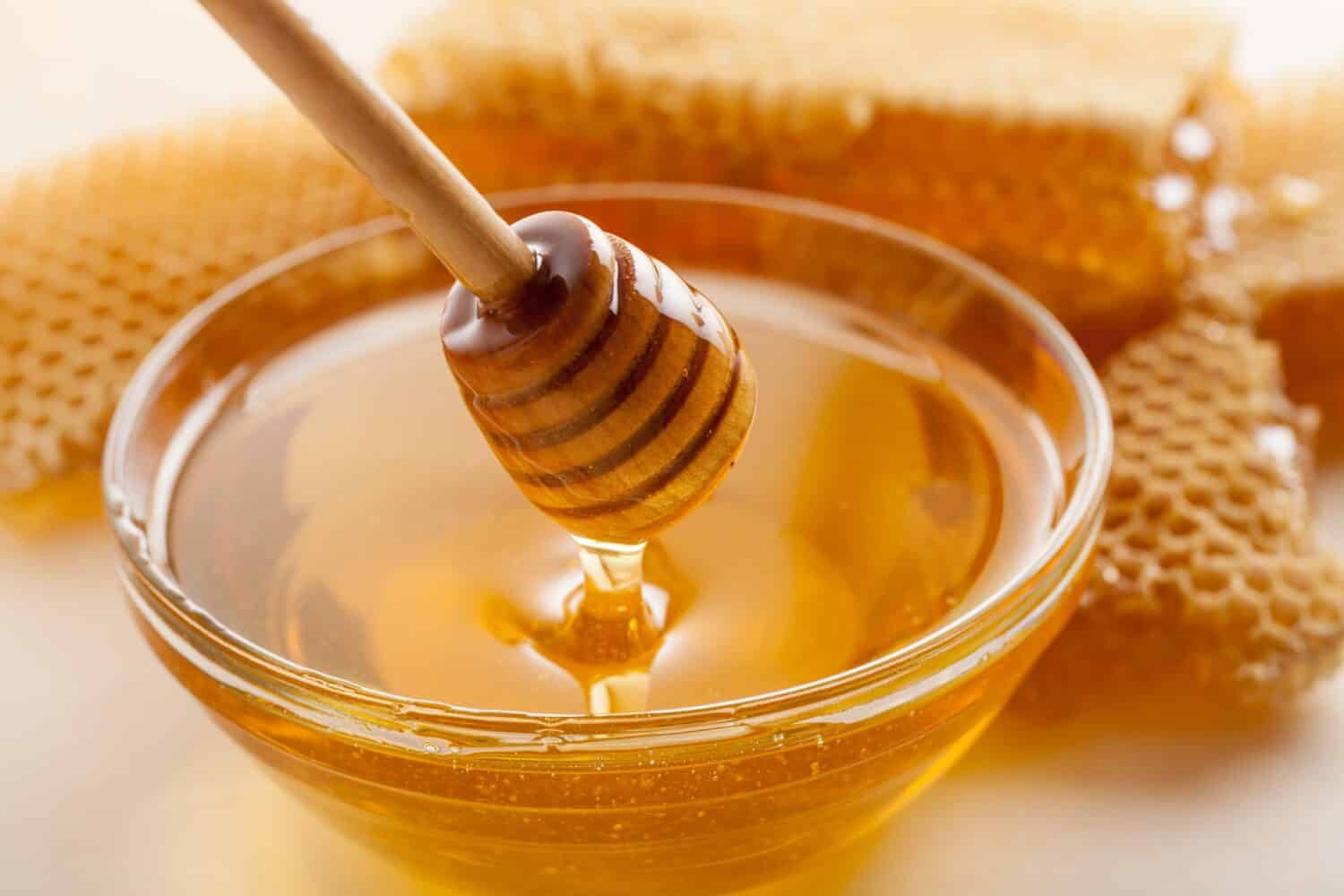
©Billion Photos/Shutterstock.com
Conclusion
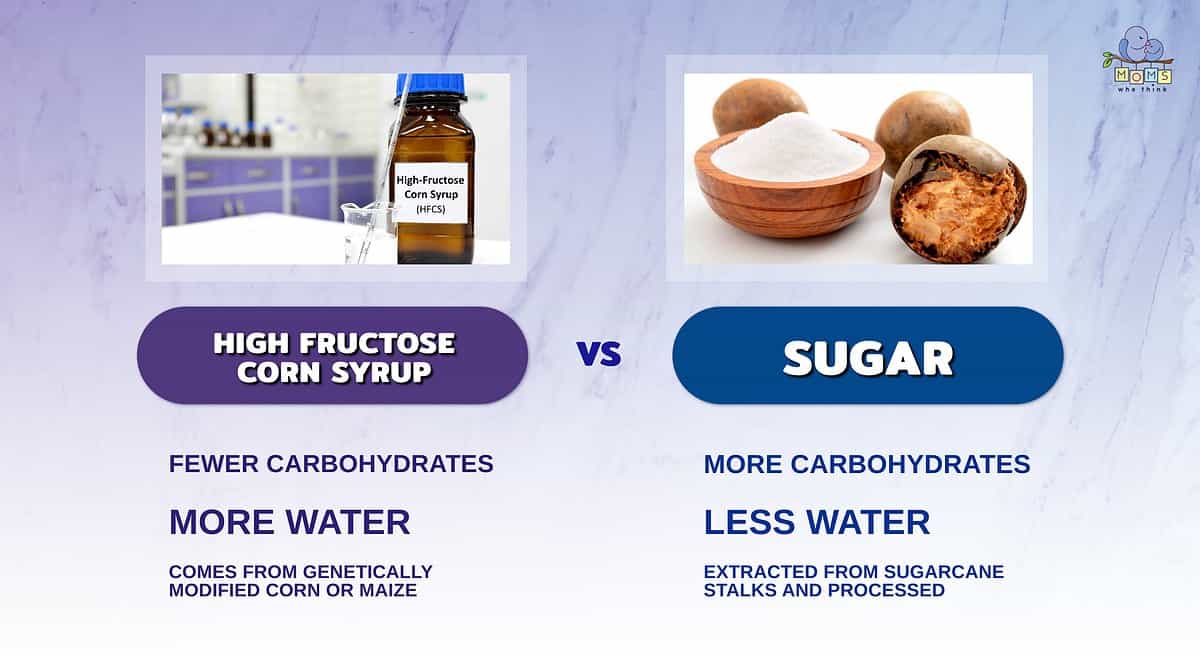
- Even though HFCS has fewer carbohydrates than sugar, that doesn't mean it's healthier!
- HFCS has more water, which makes sense considering the states both additives typically come in.
- Sugar comes from sugarcane, while HFCS typically comes from genetically modified corn or maize.
High fructose corn syrup and sugar help sweeten and enhance the flavor of foods. Their physical appearance varies as sugar is crystal-like while HFCS is clear or yellow. But their nutritional value and health effects are pretty alike. They are great when consumed moderately, but excessive use causes health problems like diabetes and liver damage.
If you're in search of a delicious sugar cookie recipe, take a look at this Cutler's Famous Sugar Cookie recipe:
Print
Cutler's Famous Sugar Cookies
Ingredients
1 1/2 cups butter (3 sticks)
2 cups sugar
3 eggs
2 teaspoons vanilla
2 teaspoons baking powder
1/2 teaspoon salt
5 cups cake flour
Instructions
- Cream butter and sugar.
- Add eggs and vanilla and mix until blended well.
- Add dry ingredients and mix. To make dough easier to work with, chill before rolling.
- Roll to about 1/4 inch thick and form (cut) cookies and bake at 350 for 10 minutes.Cookies are done when top is slightly cracked and no longer looks wet. Edges may be slightly browned.
Frosting Directions
- Beat soft butter and powdered sugar together until smooth.
- Add a splash of milk and vanilla, blend well.
- Tint frosting with food color as desired. Decorate with sprinkles immediately after frosting.
The image featured at the top of this post is ©Pixel-Shot/Shutterstock.com.
